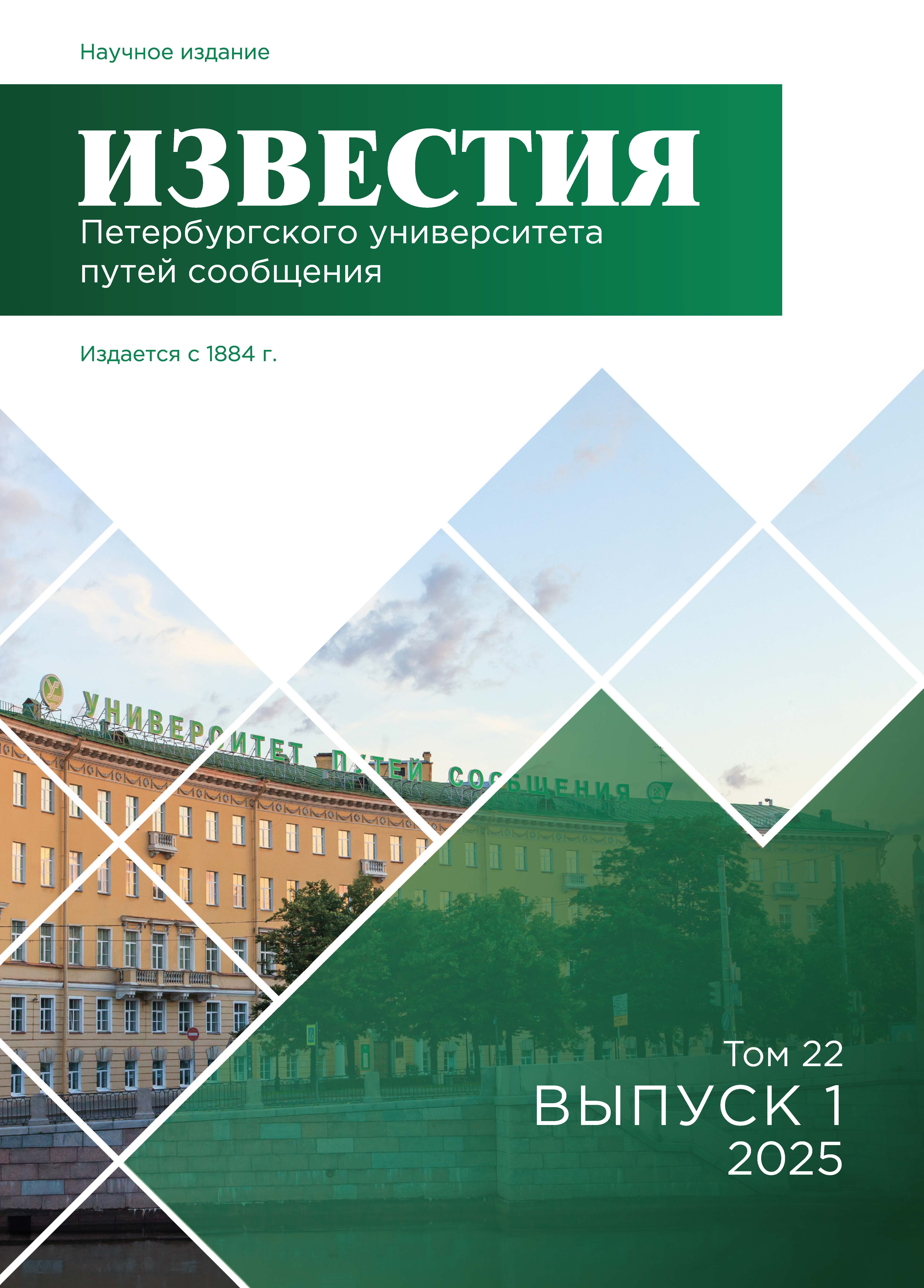Russian Federation
Russian Federation
Russian Federation
Russian Federation
To develop and evaluate an automatic train control algorithm for high-speed trains aiming at energy efficiency, timetable accuracy and increased passenger safety and comfort. Methods: An analytical and computer-based approach was used to design an automatic control algorithm. The finite element method was used to simulate an electric train movement. The algorithm has been implemented in Python language using NumPy, Pandas and Matplotlib libraries. The Sapsan high-speed train operation data have been analysed and a comparative analysis of experimental and computational data has been carried out. Results: The automatic train control algorithm has been developed to improve energy efficiency and timetable accuracy, as well as to reduce the train driver impact on energy consumption. The effect of energy savings up to more than 11% in conditions of different traffic volumes due to the implementation of the system has been recorded. The results of the motion curve simulation compared with experimental operating data are presented. Practical significance: The implementation of the proposed automatic control algorithm will improve the energy efficiency of high-speed trains, enhance their operational characteristics, increase the train timetable accuracy and upgrade the level of passenger comfort. The developed system can be used on railways with high traffic intensity to increase railway capacity without upgrading the infrastructure.
High-speed train, automatic control system, energy efficiency, automated control, automatic control algorithm, traffic optimization, railway transport
1. Valinskiy O. S. Ocenka energoeffektivnosti skorostnogo i vysokoskorostnogo zheleznodorozhnogo transporta / O. S. Valinskiy, N. P. Kalinin // Byulleten' rezul'tatov nauchnyh issledovaniy. — 2024. — № 4. — S. 7–14.
2. Gapanovich V. A. Energosberezhenie na zheleznodorozhnom transporte: sprav.-metod. izd. / V. A. Gapanovich, V. D. Avilov, B. I. Ivanov i dr.; pod red. V. A. Gapanovicha. — M.: Intehenergoizdat, Teploenergetik, 2014. — 304 s.
3. GOST R 70059—2022. Sistemy upravleniya i kontrolya zheleznodorozhnogo transporta dlya perevozok passazhirov v prigorodnom soobschenii. Principy postroeniya i osnovnye funkcional'nye trebovaniya. — M.: Rossiyskiy institut standartizacii, 2022. — 150 s.
4. Avdienko E. G. Obosnovanie funkcional'nyh vozmozhnostey sistemy avtovedeniya elektropodvizhnogo sostava pri realizacii bespilotnyh tehnologiy na osnove iskusstvennogo intellekta / E. G. Avdienko, E. A. Tret'yakov // Molodaya nauka Sibiri. — 2022. — № 2(16). — S. 55–62.
5. Baranov L. A. Avtomaticheskoe upravlenie dvizheniem poezdov metropolitena / L. A. Baranov // Mir transporta. — 2018. — T. 16. — № 3(76). — S. 156–165.
6. Avdienko E. G. Sravnitel'nyy analiz kriteriev optimal'nogo dvizheniya elektropodvizhnogo sostava s sistemoy avtovedeniya / E. G. Avdienko, E. A. Tret'yakov // Tehnika i tehnologii: puti innovacionnogo razvitiya: sbornik nauchnyh statey 11-y Mezhdunarodnoy nauchno-prakticheskoy konferencii, Kursk, 30 iyunya 2022 goda. — Kursk: Yugo-Zapadnyy gosudarstvennyy universitet, 2022. — S. 24–27.
7. Zarif'yan A. A. Ocenka energoeffektivnosti elektricheskoy tyagi metodami komp'yuternogo modelirovaniya / A. A. Zarif'yan, N. V. Grebennikov, V. V. Zak i dr. // Vestnik Vserossiyskogo nauchno-issledovatel'skogo i proektno-konstruktorskogo instituta elektrovozostroeniya. — 2013. — № 1(65). — S. 24–37.
8. Razrabotka trebovaniy k programmnomu obespecheniyu. 3-e izd., dopolnennoe / Per. s angl. — M.: Russkaya redakciya; SPb.: BHV-Peterburg, 2014. — 736 s.
9. Plaks A. V. Analiz tochnosti algoritmov avtovedeniya elektropoezdov: diss. ... d-ratehn. nauk / A. V. Plaks. — L.: LIIZhT, 1974.
10. Ie O. N. Imitacionnoe modelirovanie transportnyh sistem: programmnye sredstva i napravleniya ih sovershenstvovaniya / O. N. Ie // Aktual'nye voprosy sovremennoy ekonomiki. — 2020. — № 5. — S. 428–439.
11. Efremov A. Yu. EO-PTC: rasshirenie funkcional'nosti sistemy upravleniya dvizheniem poezdov PTC / A. Yu. Efremov // Zheleznye dorogi mira. — 2020. — № 3. — S. 61–65.
12. Kamenev S. V. Osnovy metoda konechnyh elementov v inzhenernyh prilozheniyah: uchebnoe posobie / S. V. Kamenev. — Orenburg: OGU, 2019. — 110 s.
13. Svid. 2024688117 Rossiyskaya Federaciya. Svidetel'stvo o gosudarstvennoy registracii programmy dlya EVM. Upravlyayuschaya programma dlya sistemy avtovedeniya vysokoskorostnogo elektropoezda EVS 1 i optimizacii ego osnovnyh parametrov dvizheniya / O. S. Valinskiy, N. P. Kalinin, E. V. Suhanov; zayavitel' i pravoobladatel' FGBOU VO PGUPS (RU). — № 2024687168; zayavl. 12.11.2024; opubl. 25.11.2024.
14. Svid. 2024687177 Rossiyskaya Federaciya. Svidetel'stvo o gosudarstvennoy registracii programmy dlya EVM. Upravlyayuschaya programma dlya sistemy avtovedeniya vysokoskorostnogo elektropoezda EVS 2 i optimizacii ego osnovnyh parametrov dvizheniya / O. S. Valinskiy, N. P. Kalinin; zayavitel' i pravoobladatel' FGBOU VO PGUPS (RU). — № 2024690814; zayavl. 12.11.2024; opubl. 17.12.2024.
15. Lutc M. Izuchaem Python / M. Lutc; per. s angl. A. Kiseleva. 4-e izd. — SPb.: Simvol-Plyus, 2011. — 1280 s.
16. Vander Plas Dzh. Python dlya slozhnyh zadach. Nauka o dannyh / Dzh. Vander Plas; per. s angl. L. Kiselevoy. — SPb.: Sprint Book, 2024. — 592 s.









